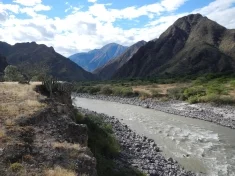The Amazon Basin is being transformed into a global economic frontier by intense global demand for commodities and energy, which is fueling rapid expansion of monocultures for grains and biofuels, large-scale hydroelectric dams, industrial mining activities and petroleum and gas development. One of the most significant changes in this wave of Amazonian frontier expansion is the growing importance of mega-development projects currently planned or under construction at a pan-Amazonian scale. The magnitude of the socio-environmental impacts caused by these projects is of a qualitatively higher order than those of prior waves of frontier expansion due to the size and geographical range of the projects, the large number of them under simultaneous construction, and the enormous amount of capital invested in them.
The first decade of the 21st century experienced a major restructuring of the financing of development projects in Amazonia. Brazil and China forged new national development strategies based on the policies of the globalization of national companies and the establishment of regional hegemonic spaces dominated by their national capital investments. The Brazilian National Economic and Social Development Bank (BNDES) and the Chinese Development Bank grew rapidly in this period and became the largest investors and creditors of mega-development projects in Amazonia.

